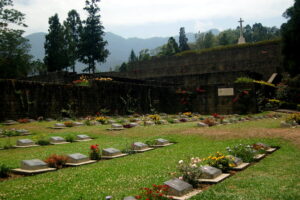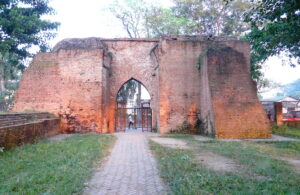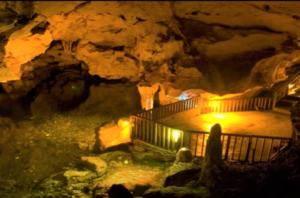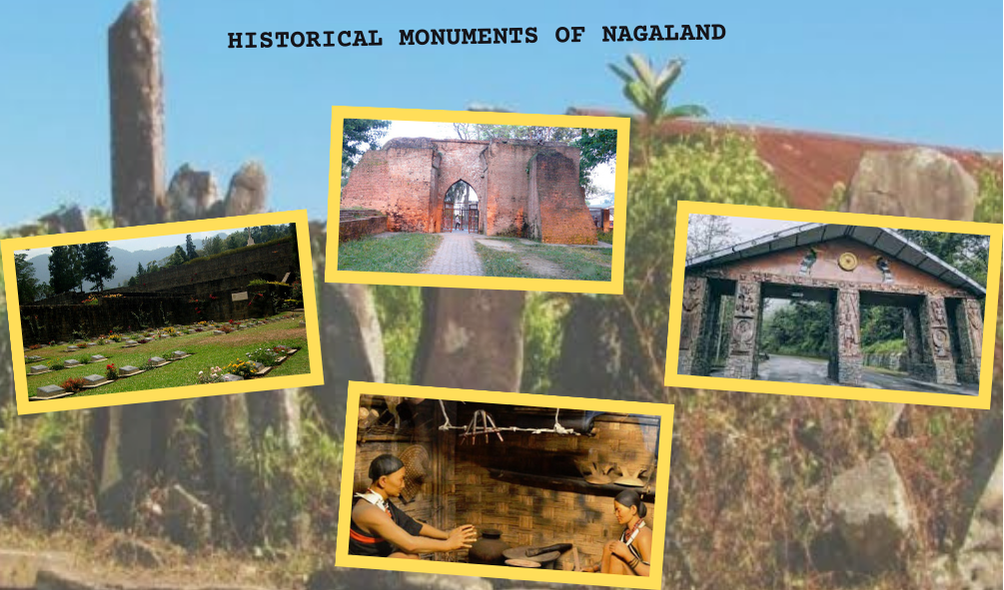One of the Seven Sister States of India, Nagaland is deeply rooted in ancient tribal culture and traditions. As the homeland of the Naga tribes, it has a unique blend of history, spirituality, and natural beauty. The arrival of the British in India introduced Christianity in Nagaland, leading to its transformation into one of the Christian-majority states in India today.
Despite being one of India’s smaller and less densely populated states, Nagaland attracts visitors with its well-preserved cultural heritage and pristine landscapes. The state’s tourist destinations offer a glimpse into both its natural beauty and the deep-rooted traditions of its people.
Let’s Discover Nagaland: Unveiling the Historical Monuments of Nagaland
1. Kohima War Cemetery: A Tribute to the Brave

Located in the heart of Kohima, is the Kohima War Cemetery. It is a memorial dedicated to the martyred soldiers of the 2nd British division of the Allied forces who died in the Second World War at Kohima. The area of the cemetery is literally the ground battle on which the Britishers fought with the Japanese soldiers. However, the Allied Forces won the battle while the Japanese army retreated back. The cemetery is now the final resting place for over 4,000 Commonwealth soldiers, including British, Indian, and Gurkha troops.
This historical place is one of the most popular tourist destinations in Nagaland,, attracting visitors from across the world. The serene atmosphere, the well-maintained lawn, and the rose plantations on the sidelines make it a peaceful place to remember the sacrifices of the fallen soldiers.
2. The Kachari Ruins: A Glimpse Into Ancient Civilization

The Kachari ruins in Nagaland consist of the remnants of mushroom-domed pillars dating back to the Kachari civilization. Originally in Dimapur, Nagaland, the ruins of the Kachari Rajbari are a significant archeological site and have been listed as a protected monument by the Indian Government.
The Kachari people, also known as Dimasa, were a powerful indigenous tribe who ruled Dimapur before the Ahom invasion in the 13th century. This historical spot provides valuable insights into the architectural style of the Kachari people. However, the purpose and origin of these pillars are unknown to mankind. Some historians believe that these domes were used as game pieces to play a game similar to chess.
3. Mokokchung District Museum: Explore Ao Naga Culture

Inhabited by the Ao Naga tribe is the Mokokchung district in Nagaland. The Mokokchung Museum located in the heart of the district, offers a fascinating glimpse into the history of the people and their traditions.
A treasure trove of cultural artifacts, the museum is an exhibition of jewelry, musical instruments, clothing, weapons, utensils, and other articles of daily use, used by the people of the Ao Naga tribe. The museum plays a vital role in promoting cultural awareness and understanding of the tribe and their lifestyle.
For the visitors, this tourist spot offers a valuable opportunity to learn and explore the Ao Naga people. Quench the thirst of your curiosity here, in the Mokokchung Museum.
check out the blog for more exploration – 9 Legendary Historical Monuments in Nepal That Will Transport You to a Bygone Era
4. Nagaland State Museum: A Journey Through Nagaland’s Tribes

Located in the capital city, Kohima is the Nagaland State Museum, which is known for its wide collection of artifacts from 16 different tribes of Nagaland. It was established in 1970 by the Nagaland Department of Art and Culture.
From pieces of jewelry to clothing, weapons, sculptures, etc., this museum offers valuable insight into the lives of these 16 different tribes! The museum is open from Tuesday to Saturday to the public and to anyone eager to learn about the lifestyle of these tribal people. A preservation of the rich culture and heritage of these tribes, the Nagaland State Museum is a must-visit!
5. The Changtongya Monoliths: Ancient Stone Structures

The ancient Changtongya monoliths have held stories of centuries that have been passed down through generations. Located in the hilly town of Changtongya in the Mokokchung district, these ancient monoliths are significant to the Ao Naga tribe and are believed to have been associated with the social and ceremonial lives of these tribal people.
About 100 in number, these monoliths of varying shapes and sizes are believed to have been erected to commemorate important, cultural activities.
October is the perfect time to visit these monoliths, dive into the history of the Ao Naga people, and to enjoy the region’s blooming vegetation.
6. Langpangkong Caves: An Ancient Refuge

In the Ao language, ‘Langpangkong’ means ‘cave of darkness.’ The Langpangkong caves, located in the Mokokchung district, are a series of ancient caves holding significant historical and cultural importance.
The ASI (Archeological Survey of India) took it under its own protection and declared it as an archeological site. These caves are believed to be almost a million years old and have served as a refuge for the local Ao people during the headhunting period.
Surprisingly, these caves are believed to be the hiding/refuge shelter for the Ahom King who fled from Assam. A beautiful formation of rocks, stalactites, and stalagmites along with underground streams make it a beautiful historical place to visit.
Conclusion
If you are planning to visit Nagaland anytime soon, be sure to visit these must-see locations. The most preferred time is during the monsoon, which allows you to witness the lush landscapes and beautiful waterfalls.
The Tsungremong festival is also celebrated during this time. Although Nagaland has a limited number of tourist spots, it is renowned for its remarkable natural beauty. Along with these, we advise you to take nature walks, breathe in lots of fresh air, meet the locals, watch shawl weaving, and immerse yourself in the delicacies of Nagaland.

